What happens if you put hot food in the refrigerator?
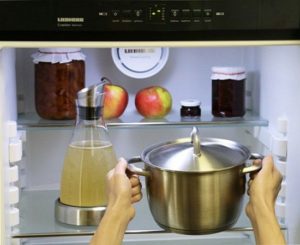 For what reason is it not recommended to put hot items in the refrigerator? This question has already set the teeth on edge, but not everyone can answer it. Everyone is accustomed to the fact that after a dish is cooked, it must be cooled to room temperature. But now not all housewives have this opportunity, because it takes time, and it is sorely lacking. It is for this reason that some people, when they wake up in the morning and prepare lunch or dinner, put it hot in the refrigerator.
For what reason is it not recommended to put hot items in the refrigerator? This question has already set the teeth on edge, but not everyone can answer it. Everyone is accustomed to the fact that after a dish is cooked, it must be cooled to room temperature. But now not all housewives have this opportunity, because it takes time, and it is sorely lacking. It is for this reason that some people, when they wake up in the morning and prepare lunch or dinner, put it hot in the refrigerator.
How can such actions affect the device itself as well as other products stored in it? In order to answer this question, you need to understand the structure and operating principle of the refrigerator.
Proper operation of refrigeration equipment involves placing food that has cooled to room temperature in the chambers of the device. This rule is recommended to be followed by both manufacturers and experienced users. It is necessary to understand why the principle of “cool first, then load” is so important and what consequences can result from ignoring it.
The content of the article
Recommendation or rule?
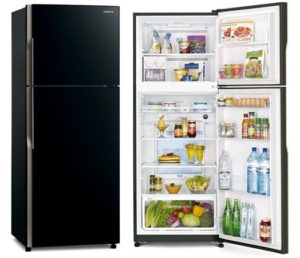 Because of the name (refrigerator), many owners of this household appliance are perplexed why manufacturers do not advise putting hot foods in the refrigerator, because it is a refrigerator and it should cool everything that is in it. If you look at the instructions, you can see a requirement prohibiting such an action. If the refrigerator breaks down due to violation of operating rules, warranty repairs will be denied, then you will have to buy a new device, and this is not cheap.
Because of the name (refrigerator), many owners of this household appliance are perplexed why manufacturers do not advise putting hot foods in the refrigerator, because it is a refrigerator and it should cool everything that is in it. If you look at the instructions, you can see a requirement prohibiting such an action. If the refrigerator breaks down due to violation of operating rules, warranty repairs will be denied, then you will have to buy a new device, and this is not cheap.
That is why you should figure out why the manufacturer prohibits placing hot food in the refrigerator, and only then draw any conclusions.
The principle of operation of the refrigerator
In this useful device, cooling occurs using a refrigerant that moves through special tubes. The electric motor starts and stops depending on the internal temperature, it is an automated system. A special sensor that sends a signal is responsible for the operation of this system.
After receiving a signal from the sensor, the engine turns off, which stops the movement of fluid. The temperature lasts for some time, then everything repeats. With this technology, the electric motor does not run continuously, but only for a short time.
What happens if something hot gets into the refrigerator?
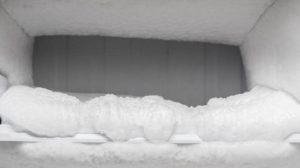 You can experiment by putting freshly cooked food in the refrigerator. To reduce the experiment time, the dish should be placed near the sensor. After some time, you can notice that the temperature inside has increased, and the motor began to work almost without interruption. Based on the results obtained, we can conclude that the device will wear out, which can lead to either serious breakdowns or complete failure.
You can experiment by putting freshly cooked food in the refrigerator. To reduce the experiment time, the dish should be placed near the sensor. After some time, you can notice that the temperature inside has increased, and the motor began to work almost without interruption. Based on the results obtained, we can conclude that the device will wear out, which can lead to either serious breakdowns or complete failure.
A hot pan quickly forms an ice crust. You can get rid of it by defrosting. Just remember that with frequent defrosting, the service life of the refrigerator is significantly reduced. According to existing standards, refrigeration units with a drip system are recommended to be defrosted no more often than once every six months; modern units with a “no frost” system are half as often.
There is another reason why you should not put unrefrigerated food in the refrigerator. Vapors from hot temperatures can settle not only inside, but also in the cooling system itself. The presence of an ice crust in the system will not allow the motor to turn off and it may fail, since it is not designed for long-term operation without interruption.
The reasons why you should not place hot food in the refrigerator are as follows:
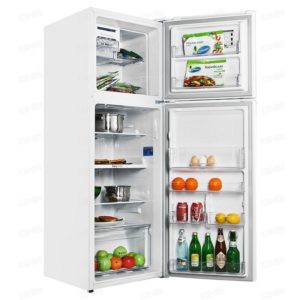 Decrease in food quality. Long-term preservation of the taste and beneficial properties of food is possible only if it is gradually cooled. Therefore, placing a hot pan in the refrigerator next to other products can easily shorten the shelf life of the latter and lead to a loss of original qualities.
Decrease in food quality. Long-term preservation of the taste and beneficial properties of food is possible only if it is gradually cooled. Therefore, placing a hot pan in the refrigerator next to other products can easily shorten the shelf life of the latter and lead to a loss of original qualities.- Violation of the safety of the utensils used. Sudden changes in temperature have a detrimental effect on the dishes used to store food in the chambers. Especially when it comes to glass and ceramic products. Microcracks and splits are a characteristic phenomenon of non-compliance with storage rules.
- Increased load on the compressor of the refrigeration unit.The cyclical operation of the motor responsible for circulating freon directly depends on the temperature inside the refrigerator. Temperature sensors installed inside the device send a signal to the compressor when the set temperature is reached. If hot or warm food is placed in the chambers, then it will take more time to obtain the desired temperature, and the compressor will work in increased mode. Non-stop operation of the motor has a negative impact on its condition and shortens its service life.
- The appearance of condensation and a snow “coat” in the refrigerator compartment. Due to the presence of warm food inside the refrigeration equipment, steam begins to be actively released, which has nowhere to go due to the tightness of the chambers. Abundant condensation forms on the walls of the device. Over time, an ice crust or a snow “coat” may form from it, which again will negatively affect the unit itself and the products stored in it.
- Increased electricity consumption. Continuing with the third point, it is worth noting that increased work of the compressor engine leads to excessive consumption of electrical energy, which is difficult to notice at first. Thus, regular failure to comply with the basic storage rule entails an increase in utility costs.
Important! The negative consequences of non-compliance with storage conditions may not be felt immediately. But when the critical mass of violations reaches the limit, the refrigerator may simply fail. The breakdown will be serious and will require considerable financial investment.
New technologies
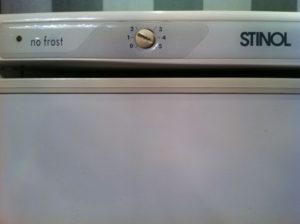 In our high-tech age, there are refrigerators that can withstand sudden temperature fluctuations.To make sure that you have purchased exactly this type of equipment, you should carefully study the instructions. It should indicate that your device has a west-frost or no-frost system. Modern technology allows for selective cooling of products, which means that it interacts only with those products that exceed the permissible temperature.
In our high-tech age, there are refrigerators that can withstand sudden temperature fluctuations.To make sure that you have purchased exactly this type of equipment, you should carefully study the instructions. It should indicate that your device has a west-frost or no-frost system. Modern technology allows for selective cooling of products, which means that it interacts only with those products that exceed the permissible temperature.
There is also a super freezing option. There is a special compartment that does not allow warm vapors to spread throughout the device, which prevents damage to the refrigerator and other products.
What harm can temperature changes cause?
The shelf life of food depends on the temperature in the refrigerator. Because of a hot dish, not only the equipment itself can suffer, but also other products that are nearby. Dairy products are especially intolerant of sudden temperature changes. Also, due to sudden cooling, your dish may suffer. A jump in temperature can change both the appearance of the dish and its taste. Therefore, it is recommended to resort to natural cooling.
Methods for quickly cooling food
After answering the question about the reasons for the ban on putting hot food in the refrigerator, a new question arises: How can you quickly cool food? Especially in summer, in hot conditions. There are a few simple tips that any housewife can use:
- Cold water is taken into a large bowl, into which a pan of hot food is placed, then ice is added to the water.
- The pan with food is wrapped in a cloth soaked in cold water, after which the pan must be taken out into the sun. The sun's rays will cause moisture to evaporate from the rag, which will reduce the temperature of the contents of the pan.
Conclusion! Hot food in the refrigerator can harm both the food and the appliance itself, which will force you to pay either for repairs or to buy a new appliance, and this is not cheap!



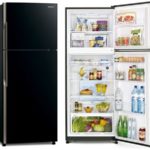
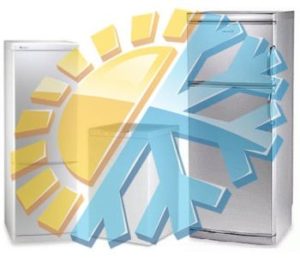
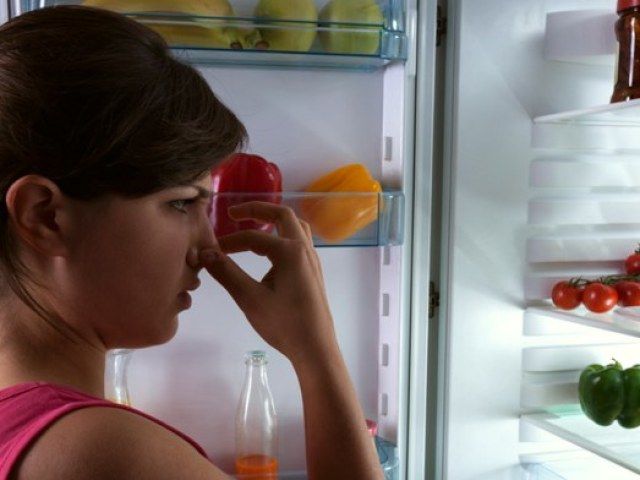
I think it depends on the model of your refrigerator. I have a whirlpool with supercooling, I put both hot and warm. The refrigerator cools quickly and because of this, nearby food does not spoil.